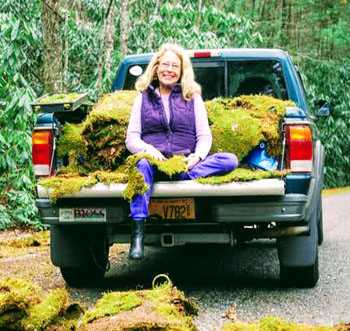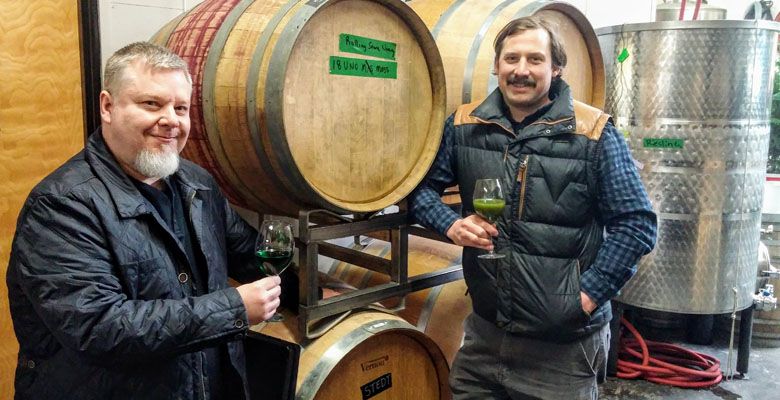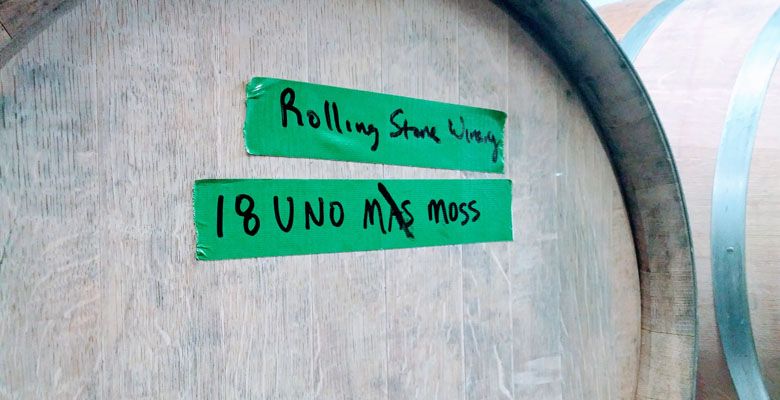Rolling Stone Gathers All the Moss
Producer challenges state’s Pinot paradigm
By Marshall Duchamp
Bryum Arnellii likes to laugh about the name of his Maryland hometown: Accident. “We call ourselves ‘Accidentals.’” Accidental perfectly describes how Arnellii became the first person in the world to make a commercial wine from moss.
He recently left Accident in his rearview mirror to make Pinot in Oregon. “I was making sweet white wine in my garage with a native grape called Himrod,” Arnellii says. “I could have kept going with my Himrod, but frankly, I just got tired of all the jokes.”
Arnellii almost fainted when he discovered quality Willamette Valley Pinot Noir grapes would cost him $2,500 a ton and more. “Criminy,” Arnellii blurts out, “I used to trade propane for my grapes back in Accident.”
Discouraged and broke, Arnellii took a part-time selling CBD-infused edibles out of the back of a van in Dundee. He also began taking long walks in the woods, which is where he had his epiphany. “I was up by the U-Pick kiwi farm on Worden Hill Road, and moss was just freakin’ everywhere. Moss is way cheaper than grapes, so I figured if I could make wine with moss, I was going to get rich,” Arnellii says.
Poring through the public library near his tiny house — it’s not like the cool ones on those cable shows; it’s just really small — Arnellii found a book about cider and spirits distillation in Great Britain. There, he found references to moss being used to make fermented beverages, and Rolling Stone Winery was born.
Arnellii discovered mosses produce energy in the form of sugar during the process of photosynthesis, so he began experimenting with patches of moss in an old metal horse trough behind his tiny house. “I learned very quickly that the dry moss you buy in bags at the nursery really sucked,” Arnellii says. “I went looking for the fresh stuff, and that’s when I found Andreaea.”

Andreaea Cespitans sustainably grows a wide variety of mosses at her farm near Mist, Oregon. After a few experimental patches, she helped Arnellii zero in on rock cap moss and haircap moss. “The haircap moss amplifies everything in moss wine, from aromas to the body. And the rock cap moss adds a nice bit of minerality,” Arnellii says.
“I thought he was crazy. But the next thing I know, he’s talked me into being his ‘mossyard’ manager,” Cespitans says.
Arnellii is making his first two wines, “Uno Moss” and “Clean Green,” for his Rolling Stone label at the S.E. Wine Collective in Portland. Arnellii says “Tom Monroe and Kate Joanna Norris were very supportive. They told me they’ve had some pretty weird stuff in here, so why not moss?”
The Uno Moss is an extended rhizoid-contact natural wine. It is unfiltered, unfined and nothing is added or taken away from the wine. It tastes nutty and earthy and I lichen it to a 20-year-old white Burgundy, complete with flecks of jade. “It’s pure bryophyte dynamite,” Arnellii likes to say.
Concerned that some customers would be put off by chunky things floating in the wine, Arnellii made the Clean Green. “It’s definitely not natural. I cross-filtered the hell out of it and added enough sulfur to make Vulcan cry,” Arnellii confesses. The Clean Green is refreshing, with brisk acidity and traces of chlorophyll, brimstone and shaved-fennel. Serve the Clean Green with spinach risotto, and you will be worshipped by friends and family as a demigod.
Making moss wine has had its pitfalls, however. Arnellii currently finds himself ostracized by many of the traditional Pinot Noir producers. “It’s not necessarily because I’m not making Pinot, Arnellii says. “They mostly seem upset because I’m not using any grapes at all.”
Then there is the matter of the “cease and desist” letter from the famous rock band. Arnellii wasn’t intimidated; he was merely disappointed the letter was from one of the Rolling Stones’ junior marketing executives. “I didn’t even rate an attorney,” Arnellii says. “But I told this Nigel fellow to ‘sod off’ because Mick and Keith stole the name from Muddy Waters in the first place.”
After three and a half months in a combination of neutral acacia wood and a plastic IKEA toy box, Uno Moss ($25) and Clean Green ($55) were released to the world. I wouldn’t get caught watching the paint dry if you want to buy these wines. Arnellii says he has had several inquiries from a place where people are so into moss, they conduct moss tours and make it into fine jewelry.
“I’m going to be huge in Japan,” Arnellii says.
Thanks to nationally recognized moss expert Annie Martin — shown in the pick-up truck — for her assistance with this article. She is a responsible moss steward and wants everyone to know you can’t really make wine from moss. Her company, Mountain Moss, is located in Asheville, North Carolina.














